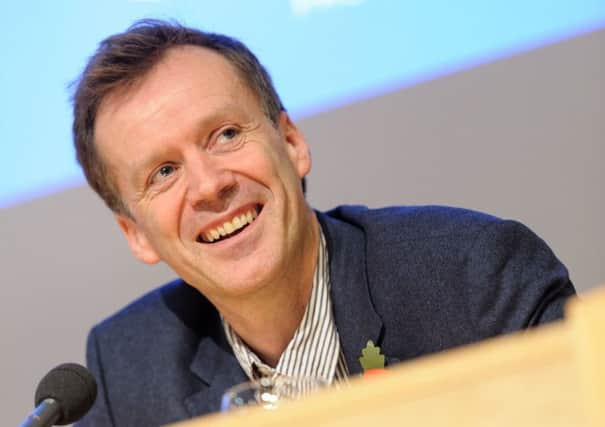Miles Padgett: Cutting edge, innovative technology is being invented and marketed right now


It was even something that Albert Einstein himself could not reconcile and while this question still provides physicists and philosophers with something to debate, quantum physics itself also offers us something more – technological innovation.
The UK has world-leading research pioneering both the understanding and the uses of quantum physics. In 2014 the UK Government announced a £270 million investment targeting the development of Quantum Technologies, an emerging sector that is projected to drive a global market of £11 billion per year.
Advertisement
Hide AdAdvertisement
Hide AdCentral to this investment was a competition to establish four hubs of excellence. The University of Glasgow pitched for, and won, the competition for the quantum enhanced imaging hub, which resulted in the creation of QuantIC.
QuantIC brings together more than 100 researchers from the Universities of Glasgow, Heriot Watt, Strathclyde, Edinburgh, Warwick, Bristol and Oxford and industry partners in a collaborative venture to revolutionise imaging.
But how can quantum physics help design better cameras? Smartphones these days have more and more megapixels. The millions of small detectors in your phone are arranged in a grid, and a single pixel from each detector in the grid combines to give you an image.
But what can just one detector do on its own? QuantIC is designing cameras combining the technology used in digital cinema projectors with only a single detector – a “single pixel camera” that images colours invisible to the naked eye. Such cameras can see through smoke and fog, which can be very useful for the emergency services and in driverless cars.
Working with M-Squared Lasers, a Scottish company already selling products globally, we are adapting this single pixel technology for seeing toxic gases as they leak out of pipes or from the ground, something which would benefit the oil and gas and environmental monitoring industries.
The ability to time and measure light at its most quantum level opens seemingly magical applications too. If you drop a pebble in a pond, the ripples in the surface spread from the centre and one can work out where the stone was dropped even if you did not see it.
This effect works for light too and it is this quantum property which has allowed QuantIC to develop cameras that can spot hidden objects as they approach from around a corner or are hidden behind a wall. This might make road accidents easier to avoid by drivers. Measuring the time it takes for light to hit the object and bounce back has also allowed our researchers to develop new technologies that can produce 3D images in very low light conditions, which would be suitable for use in advanced microscopes for life sciences.
Returning to your phone, inside is a sensor that measures gravity. It is this sensor that ensures your screen display always rotates to be upright. But our researchers have been investigating how quantum physics can make this sensor a million times better. Perhaps we can use it to find pipes buried underground, a major problem in a Victorian city like Glasgow. Expensive gravity measurement systems are used to help locate new oil reserves or hidden caves, but working with companies such as Bridgeporth and Schlumberger, QuantIC is seeking to replace these million pound instruments with innovative, disposable hand-held devices that can be deployed in the field.
Advertisement
Hide AdAdvertisement
Hide AdTaking the ideas inspired by quantum physics that are born in a university research laboratory and turning them into innovative quantum enhanced imaging technology through industrial collaboration is what QuantIC does.
This year we’ve been able to exhibit nine of our systems at Laser World of Photonics in Munich, the world’s largest optics and photonics trade show. We also took part in UK Quantum Technologies Showcase in Westminster, London with 12 exhibits, many of them with our industry partners.
When QuantIC began, none of these projects were planned – rather they have emerged from partnership between university researchers and company engineers bouncing ideas and opportunities. Working side by side with our industrial advisors, experimenting with the demonstrator cameras in our innovation centre created by funding from the Scottish Funding Council, QuantIC is the advert both for British science and innovating cutting edge discovery science into the commercial world, something which I am proud to be a part of.
Professor Miles Padgett holds the Kelvin Chair of Natural Philosophy in the School of Physics and Astronomy at the University of Glasgow.